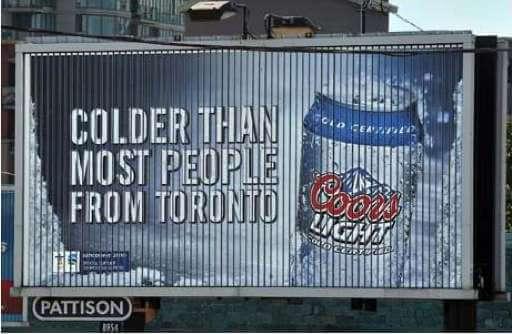
Outdoor advertising is best explained as a marketing or media technique that reaches consumers when they’re outside their homes. This can mean billboard advertising, transit advertising, mobile billboards, guerrilla advertising, ambient advertising, and street furniture. Outdoor advertising, also called OOH or out-of-home advertising, makes public a company or brand’s business products and services in a noticeable way. Whether through signage on the sides of buildings, or visuals pasted onto bus shelters, outdoor advertising has the ability to capture the attention of everyday outdoor faces.
This post will primarily explain the many different ways one can execute outdoor advertising, and the purposes they hold to draw consumers in. We will take into consideration the leaps and bounds that impressive outdoor campaigns go through by examining their origins in advertising. Outdoor advertising is quite vital for companies striving to get some kind of attention, and it’s an almost necessary marketing tactic if they want to accumulate more sales. Let’s talk about the outdoor advertising that lives in our world with references to direct examples.

Outdoor Billboard Advertising
The first form of outdoor advertising that comes to mind for most people is billboard advertising, simply because it’s so prominent and dates back from a while ago. Going as far back as 1796, the first illustrated poster was designed when the lithographic process made strides. In the early days of billboard advertising, messages mainly alerted people on foot or horseback about upcoming locations within their distance of range. They would provide an approximate distance to these attractions for people who were in the presence of them. Early billboard advertising was much more informative and directional than it was creative.
Then, during the early 20th century, billboards were used to publicize businesses to people driving cars. Because of the new consumption of automobiles, businesses had a new target: drivers. Companies sought after travellers and passengers and created large-scale billboards that laid before them on their destination routes. Clients demanded newer and fresher billboards constantly to meet the attention of drivers looking out their windows.
National billboard campaigns began to form in the early 1900s, where big advertisers created a mass production of billboards for a large consumer market. In 1913, “open boards” in public spaces were filled with public service messages still used to this day. During the uproar of billboard advertising, different executions were birthed such as: firstly, static billboards (which are stagnant, outdoor messages on board spaces), digital billboards (which are computerized, moving image messages on electronic signage), and hand-painted murals (which are usually executed by an artist who paints consumer-focused messages on the sides of buildings).
The above billboard example from Coors Light is a moving image billboard that changes its messaging every 5 seconds or so. It uses panels to reveal another advertised message underneath. These types of billboards are prominent in spaces where a lot of people are located, such as highways or central meeting points. The purpose of these billboards is to advertise multiple messages in one place as a means of shared advertising space, and to keep messages constantly changing.
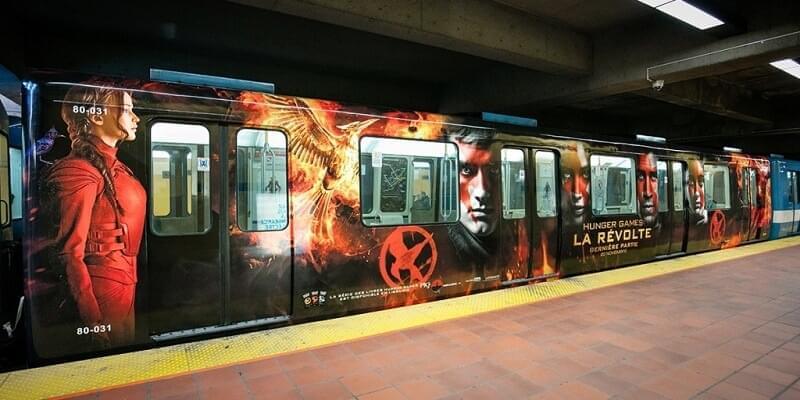
Outdoor Transit Advertising
Though the pictured example above is indoors in a subway platform, transit advertising is still considered an outdoor advertising phenomena because it’s outside your home. The earliest form of transit advertising dates back to 1850 in the U.S. when panel signs were attached to horse-drawn streetcars that ran on rails in New York. Lord & Taylor department store was said to be the first company to advertise on transit. The beginning of transit advertising is a dead form of advertising nowadays; we don’t see horse-drawn buggies carrying advertised messages anymore. Unlike the roots of billboard advertising that still remain true to this era, outdoor transit advertising has drastically changed courses.
Outdoor transit advertising gets consumers when they’re commuting. It has the unique ability to target consumers whether they’re actually on transit or not, as transit advertising can include full bus and streetcar wraps on the exterior as well as bus shelters. Consumers are counted as impressions while on transit because they’re susceptible to their public surroundings, including the advertisements. When drivers are targeted through billboard messages, they’re still worthy impressions but they’re less likely to have a direct relationship with the ad because they need to pay attention to the road. Commuters on transit can spend that much more time observing an outdoor ad because they’re not in control of the vehicle. Transit advertising, in this way, can be more thorough and copy heavy.
The pictured example above is for a Hunger Games movie poster which envelops the entire subway car. This is effective for consumers because it has a theatrical presence and gives a boring old subway a polished, exciting edge. Every commuter waiting on the platform is unable to miss this messaging as they are waiting for the train that the messaging has pasted on it.
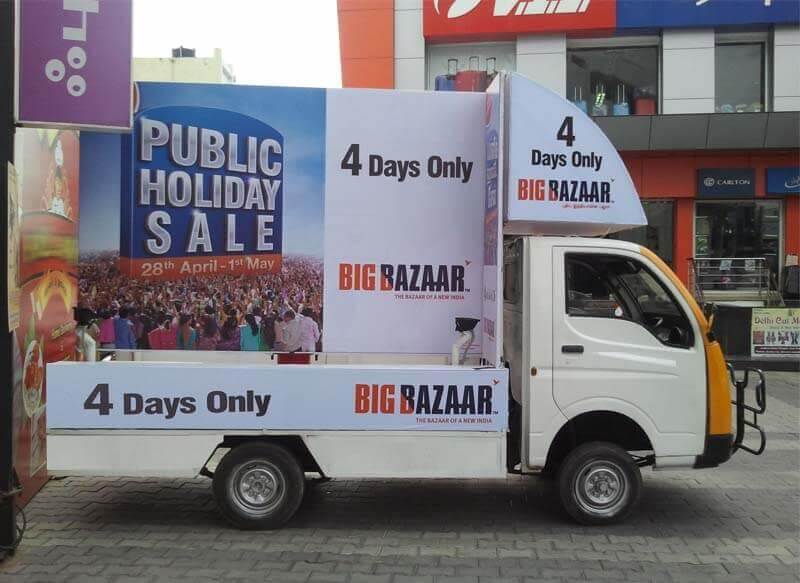
Outdoor Mobile Billboard Advertising
Classified under the “transit” category by The Outdoor Advertising Association of America, mobile billboards started showing up in New York City in the 1980’s. The most common style of mobile billboards is on trucks with a 22′ wide by 9′-10′ high dimension. However, more recently, digital LED displays on mobile billboards have the capacity to rise above those lengthy restrictions. Digital LED displays use digital screens and pixels to bring messages to consumers in both a day and night setting. The main difference between mobile billboards and other types of billboards is that mobile has the ability to move messages around because it’s always on-the-go. The vehicle driver can drive the message any which way, along designated routes or areas without many outdoor advertising campaigns.
Mobile billboards are great for rolling out new products, as they can hit hard to reach places with their advertising on wheels. This tactic entices many demographic audiences. This form of outdoor advertising relies on eye-catching visual displays to intrigue audiences, as opposed to written messaging. Because the consumer may only have a few seconds to see the ad, a bold visual will make them remember it more than trying to decipher text in a short amount of time. Mobile billboards are also great executions parked outside large sporting or music events.
The above example advertises a Big Bazaar public holiday sale that’s lasting for only 4 days long. This is smart to share using a mobile billboard because the audience reach is very extendable. Many interested shoppers can now be aware of this sale because of this moving vehicle making its rounds across a large advertising landscape.
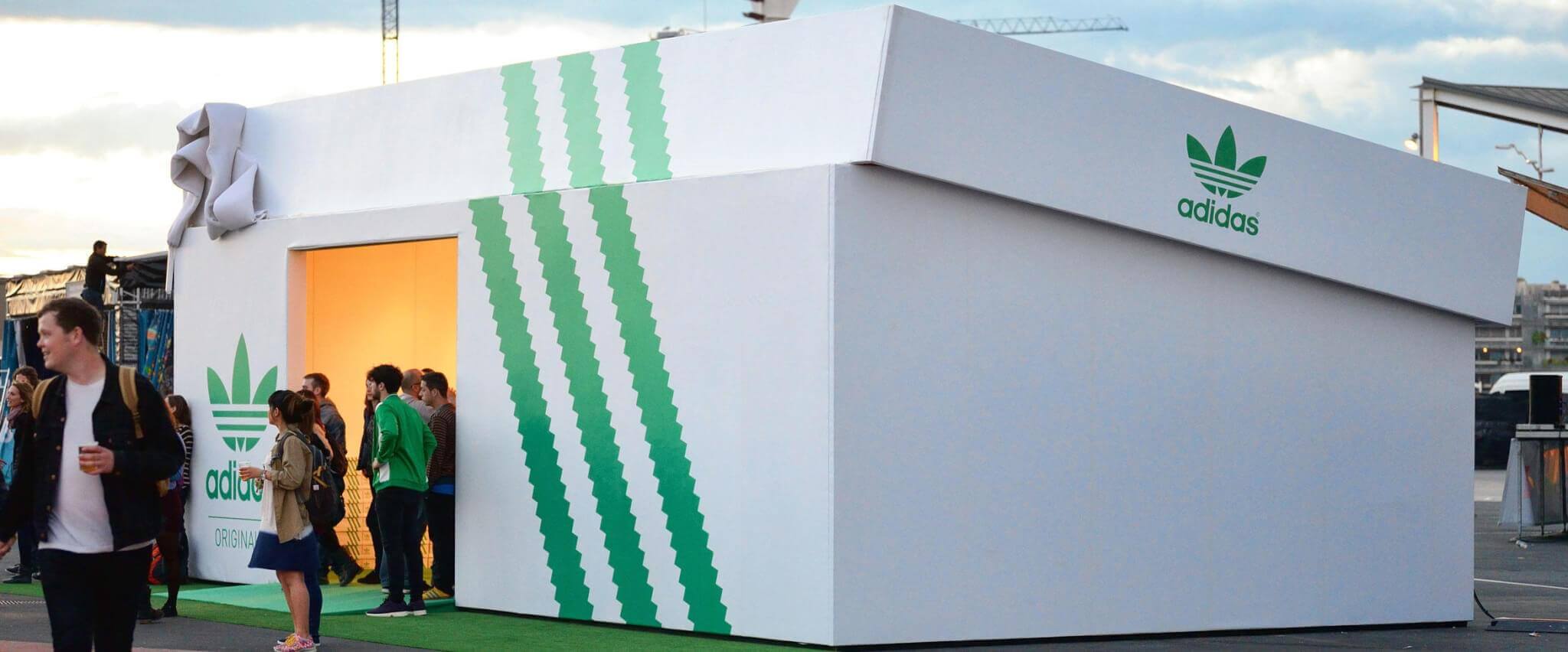
Outdoor Guerrilla Advertising
Guerrilla marketing is interested in creating low-cost unconventional advertising that has a mass appeal to it. Jay Conrad Levinson coined the term in his 1984 book titled “Guerrilla Advertising” which was inspired by guerrilla warfare that relates to small tactic strategies such as ambushes and elements of surprise. Guerrilla marketing uses these same tactics in its advertising approach. High energy and imagination are major players in fleshing out a guerrilla advertisement. This outdoor advertising strategy connects with consumers on a more personal and interactive level, resulting in a very memorable experience with a brand.
Its unconventional marketing strategies are consumer-driven in that they ask the consumer to participate in the experience. Guerrilla advertising is outdoor advertising at a playful fee. Often not necessarily referring to the brand in question, guerrilla marketing taps into fundamental human curiosity. The pictured example shows a walk-in Adidas shoebox that consumers can enter and experience what the brand has in store for them. By allowing consumers to touch, feel, see, and share your brand in a different light makes them more comfortable with the brand’s purpose and perception. Outdoor guerrilla advertising is a consumer’s delight.
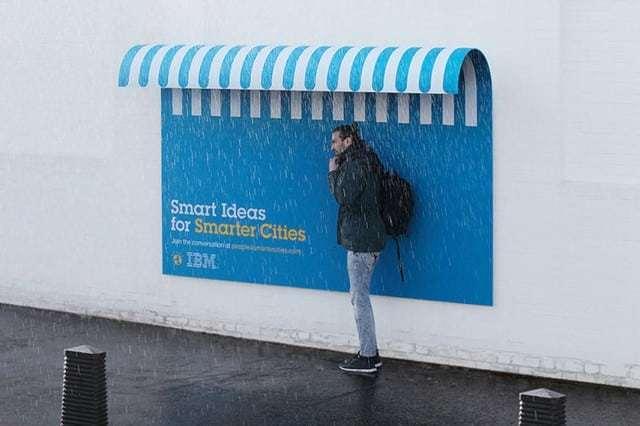
Outdoor Ambient Advertising
Similar to guerrilla advertising in that it catches consumers by surprise, ambient advertising is interested in placing ads where they normally wouldn’t show up. First used by Concord Advertising in 1996, a UK agency specializing in outdoor campaigns, discrete advertising begged for another name that encompasses the strategy of placing advertisements in unusual locations. This is where the term “ambient advertising” arose from. Location, execution and temporal issues are important factors of ambient outdoor advertising as it requires significant planning to pull off. Ambient advertising has the philosophy that everything in an outdoor space is a potential advertising medium.
A few differentiators of ambient advertising as compared to other outdoor advertising include:
– using surprise and humour to engage consumers and get them involved
– less wastage because it’s recycling spaces to create ads
– discovery is highlighted as consumers must find their own experience with it
– target audience is of importance because not every demographic will engage with or see the ambient the same way
Consumers make use of outdoor ambient advertising because it’s presented on something they would typically use, such as a gas pump or an umbrella, but it actually stands for a bigger company. It’s subtle publicity with a large impact. The picture ambient above is for IBM but it also acts as a shelter for consumers to hover under from the rain. This ambient has a giveback while also advertising their savvy business model.
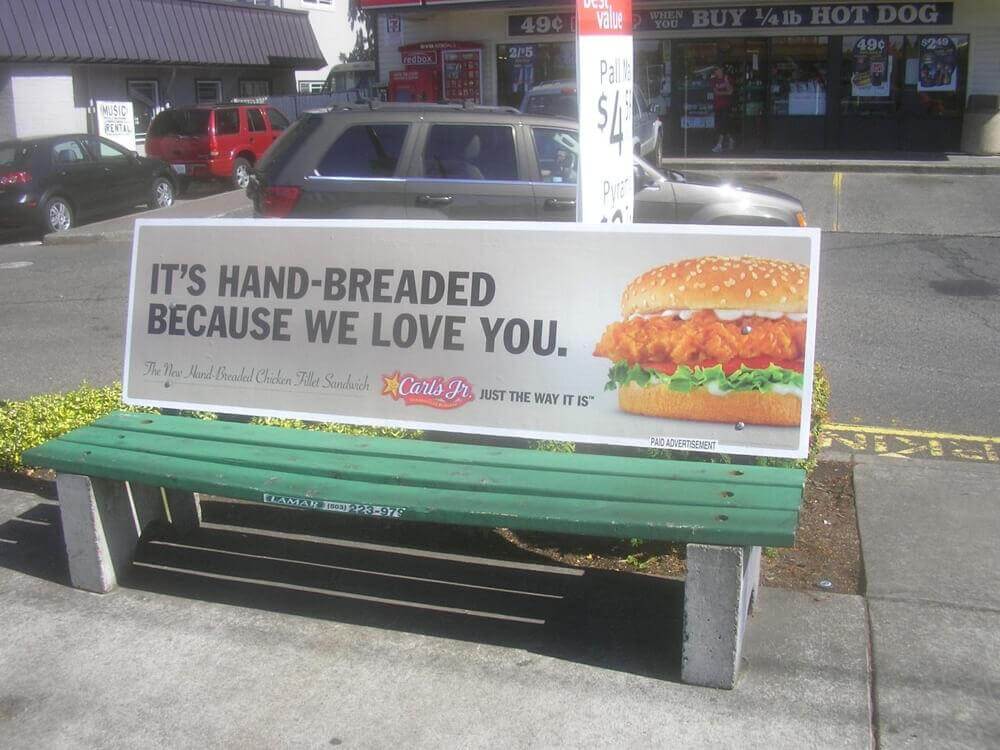
Outdoor Street Furniture Advertising
Street furniture advertising has been around since billboard displays rocked the outdoor advertising world. They’re simply another way to broadcast a message publicly, this time using spaces where people rest on. Street furniture advertising engages the consumer by inviting them to take a seat, or make use of outdoor space, whilst being a part of an advertised message. The example above features a Carl’s Jr. burger on a public bench. Someone wanting to sit down in this space is very impressionable to the message on the bench. This, inherently, drives consumer attention and creates a connection with a brand using public tools of convenience.
After examining outdoor billboard advertising, transit advertising, mobile billboards, guerrilla marketing, ambient advertising, and street furniture, it’s safe to say that there’s a lot to be learned from outdoor advertising strategies that playfully engage with their core, target consumers and everyday people. Outdoor advertising lives in our spaces and connects people to brands whether they’re aware of it or not.


